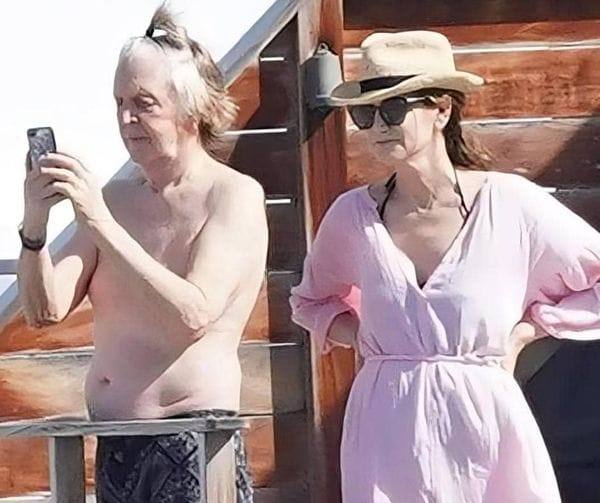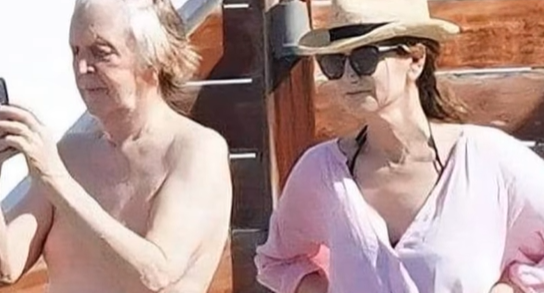Paul McCartney’s Dramatic Transformation Over the Years: From Beatlemania to Timeless Legend
Few musicians have had a cultural impact as profound — or as enduring — as Paul McCartney.
From his early days as a fresh-faced teenager in Liverpool to his status as a living legend in the world of music, McCartney’s transformation over the decades has been nothing short of remarkable.
The Beatle Years: 1960s
Paul McCartney first captured the world’s attention as the charming, mop-topped bassist of The Beatles, alongside John Lennon, George Harrison, and Ringo Starr. During this era, McCartney became synonymous with youth, innovation, and the cultural revolution sweeping the globe. His contributions to iconic tracks like “Yesterday,” “Hey Jude,” and “Let It Be” helped cement the band’s legacy.

In those early years, McCartney was known for his boyish looks, sharp suits, and infectious smile — the quintessential image of 1960s pop stardom.
The Wings and Solo Era: 1970s–1980s
Following The Beatles’ breakup in 1970, McCartney reinvented himself by forming Wings, a band with his wife Linda. This period saw a dramatic shift in his image: longer hair, looser clothes, and a more laid-back, rock-and-roll aesthetic. Musically, McCartney explored a broader soundscape, blending soft rock, folk, and experimental styles.
As a solo artist, he continued to evolve, releasing hits like “Band on the Run,” “Live and Let Die,” and “Maybe I’m Amazed.” His willingness to change styles reflected both the times and his fearless creative spirit.
Aging Gracefully: 1990s–2000s
As the decades passed, McCartney embraced his role as an elder statesman of rock. His style matured — smart blazers replaced tie-dye shirts, and his clean-cut demeanor returned, albeit with a more reflective tone. His personal life also changed dramatically after the loss of Linda in 1998 and his later marriage to Heather Mills, followed by a very public divorce.
Still, McCartney remained prolific, releasing critically acclaimed albums, collaborating with artists like Elvis Costello and Radiohead’s Nigel Godrich, and even composing classical works.

Modern-Day Icon: 2010s–2020s
In recent years, McCartney has defied age. Touring well into his 80s, he continues to perform sold-out shows across the globe. His appearance has changed — white hair, a leaner frame, and a visible embrace of age — but his energy on stage remains youthful.
His 2018 album “Egypt Station” debuted at No. 1 on the Billboard chart, and in 2020, he released “McCartney III”, completing a trilogy of self-produced solo albums spanning five decades.
He’s also remained culturally relevant, collaborating with Kanye West and Rihanna on “FourFiveSeconds,” and appearing on podcasts and late-night shows, showing humor and humility.
Legacy in Motion
Paul McCartney’s transformation is more than just physical. It reflects a life dedicated to creativity, reinvention, and resilience. He has adapted through tragedy, global fame, personal controversies, and shifting musical landscapes — always emerging with authenticity and grace.

From Beatle to knight, from youth icon to wise elder, McCartney’s journey is a testament to how one man can evolve across eras while remaining universally beloved.
Paul McCartney’s journey from a young Liverpudlian to a global music icon is a testament to his enduring talent and adaptability. His physical transformation over the decades mirrors his evolving musical styles and personal experiences.
1950s–1960s: The Beatlemania Era
In the early 1960s, McCartney emerged as the charming, clean-cut bassist of The Beatles. With his signature mop-top haircut and boyish looks, he became a symbol of the youthful exuberance that defined the era. Photographs from this time capture his fresh-faced appearance, reflecting the innocence and excitement of the band’s meteoric rise.
1970s: Embracing Change with Wings
Post-Beatles, McCartney formed the band Wings with his wife, Linda. This period saw him adopting a more relaxed and bohemian style, with longer hair and a more rugged appearance. The 1970s were marked by experimentation, both musically and personally, as he navigated life beyond The Beatles.#
1980s–1990s: Maturity and Reflection
The 1980s and 1990s brought a more mature McCartney. He sported shorter hairstyles and a more polished look, reflecting his status as an established solo artist and family man. This era included significant personal events, such as the loss of Linda in 1998, which brought a period of introspection and change.
2000s–2010s: Reinvention and Legacy
Entering the new millennium, McCartney continued to evolve. He experimented with various musical genres and collaborations, showcasing his versatility. Visually, he maintained a youthful energy, often seen with dyed hair and contemporary fashion choices. However, by the late 2010s, he began embracing his natural aging, allowing his hair to grey and adopting a more classic style.
2020s: The Timeless Icon
Now in his 80s, McCartney embodies the grace of aging with dignity. His silver hair and seasoned features tell the story of a life rich in experiences. Despite the passage of time, his passion for music remains undiminished, as he continues to perform and connect with audiences worldwide.
For a visual journey through Paul McCartney’s transformation, you can watch the following video:
